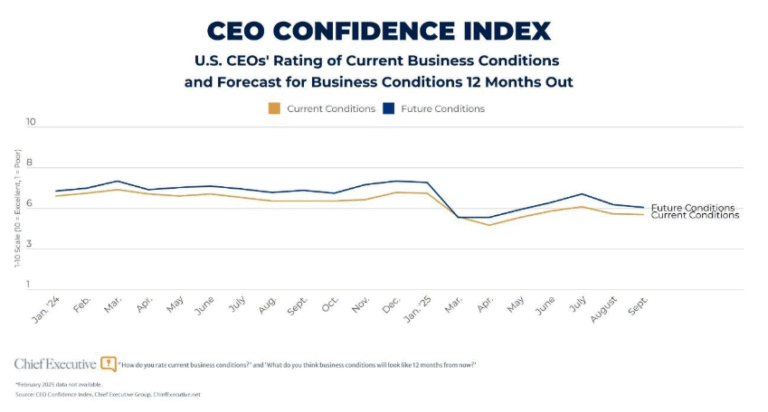
This is the fourth of five parts.
In a recent interview with Chief Executive, we asked Jim Collins, one of the most-admired management thinkers of our time, what—after a lifetime of studying how to build great companies and how to be a great company leader—are the biggest lessons he’s learned, the ones that stand the test of time. (Read part one of the interview, on Leadership in America, part two on the real legacy of Steve Jobs, part three on the big question, and part five, on the case for being great, here.)
Jim Collins: So first of all, because of the way we did our work, so far, I am highly confident that the key principals that we found are as sound as ever. That was the whole point of it, right? I do believe that over time, Level 5s [high performing servant-leaders] have a much better chance of building an enduring great company than non-Level 5s.
It doesn’t mean that non-Level 5s can’t be successful. We know that they cannot be successful or that they can be successful. But you have a much better chance of building something truly great and lasting at a more Level 5 than non-Level 5. There’s no question that the principle of the first two and the right people on the bus counts even more than in the past, because the world’s more uncertain. So your hedge against uncertainty is much more around your people than it is around your strategy, or around your technology, or around what you’re going to do exactly next, because that may have to change. So you really hedge it by people.
All the things…the discipline to really stay focused on what you can truly do better than anyone else in the world in the hedgehog concept. I mean, so we could go through the principles: the disciplined people and disciplined thought, disciplined action, building greatness to last, that basic framework. And the more I live with it, the more I see its power. In the K-12 study, we see that framework playing out. They pretty much follow it, even if they didn’t know they were following it. So I’m very confident in the principles.
And as I stand back and I think about those principles, the big ones are: One, Level 5 leaders but not just at the top, now. I think about it in unit leaders, absolutely right people in the key seats. Ninety percent of your key seats had better be filled with the right people, or you’re not going to be able to have a great company. The discipline to really live in the reality of confronting brutal facts will still stand out to me. But then, the one¬—as you kind of move through that framework of disciplined people, disciplined thought, disciplined action—recently, you asked the question, you know, what’s really been on my mind. What happens with each of those concepts is, my understanding deepens.
So I want to give you a couple of examples of, it’s not that the principle changes, it’s that your understanding of the principle evolves to a different level. So if you’re really building…like, if I were to pass something along today that isn’t so much in the books that’s really clear to me now, it is…it’s the extension of the flywheel concept. We just put this up on the website, so it’s available for everybody in the world.
But sometimes, you have an idea that’s really a powerful idea. But then, later, you don’t really understand how powerful the idea is and how much it could help people if you kind of took it to another level. So in Good To Great, we found that this idea of the flywheel…that a great transition and a great company gets built, like turning a flywheel, building momentum over time. And you know, and I could go back through history, right, and you can kind of begin to see whether they be negative flywheels or positive flywheels, the cumulative effect of something begins to add up over time. And so, you build one turn, two turns, 14, 16, 18, and you build the momentum of the flywheel.
Jim Collins: The Chief Executive Interview
Part 1: On Leadership in America | Part 2: The Real Legacy of Steve Jobs | Part 3: The Big Question | Part 4: The Big Takeaways | Part 5: The Case for Being Great
And so, I’ve always known that the flywheel wins out and that that really does better describe how great things, over time, get built. It’s the flywheel effect. But then, I had this interesting and strange experience. I was reading the book “The Everything Store” about Amazon and I come across my name. And I’m thinking, “Why am I in here?” And I had this thing that triggered in my head as I read. I was like, “Oh, yeah. I remember that.” I’d gone up to Amazon in 2001, right after the publication of Good To Great.
And they were…And I met with the board¬—and that included Jeff Bezos and the executive team—and all I did was really teach the ideas of…from Good To Great and, “These are the things you need to think about, to think about going from a start-up to a great company, even coming out of the dot-com thing.” And I hoped that they took some lessons away. And I’ve always said, “If you want to look like a great teacher, all you’ve got to do is pick great students.” It’s a very simple equation. They’re great students.
So they walk away and Bezos and their team took the flywheel idea and they did something really great with it. And I challenged them to, “Get clear on your flywheel,” and I just left it in their hands. Well, sure enough, they did. And so, one, what happened is, they then took the flywheel and began building it. So here’s a sketch of what that looks like. So if you take a look, you’ve got this idea of…you can see this virtuous cycle starting to build here.
As a long-time Prime member, this is very recognizable to me.
Exactly, exactly. Yeah.
You get sucked more and more into the Amazon vortex.
Exactly. They lowered prices on more offerings, that allows you to increase customer visits and I go there more. Attract third-party sellers. More stuff available, that allows you to extend the store. Expand the store and extend distribution, boom, grow revenues per fixed cost. Boom, that allows you to lower prices on more offerings. And then, you begin to…that gets more customer visits, third-party sellers, expand the store, extend distribution by Whole Foods, grow revenues per fixed cost, lower prices on more offerings.
They did this brilliant job of taking the flywheel idea, but then crystallizing it into their flywheel, which then became the machine that they begin to build with. And so, I thought to myself, “Wow, what’s interesting is that even though they really said, “What’s our flywheel?” Not just the flywheel concept, but, “What’s our flywheel?” And so, over time, I started thinking that’s a powerful thing. So you get in an executive or in a team—somebody sitting here at this table or whatever—and you say, “You need to get clear on your flywheel.”
And so, you begin to say the flywheel concept is powerful, but it’s when you can harness it to your situation that it becomes even more powerful. So you’ve got Vanguard with the Mutual Fund Company. They articulated their flywheel and they began to build it and that’s in here, as well. And so, one of the things I come away with is this thing of okay, the concepts, Level 5 leaders, right people on bus, hedgehog concept, flywheel, 20 Mile March, right… all the key concepts, those all are still true.
But what happens is, if you live with them long enough, you understand them at a deeper level and you understand how you can harness them at a deeper level. And so, for me, what’s been happening is, there’s that classic line from T.S. Eliot, “The more you explore, the more you find that you end up at the place where you began and understand it for the first time.” Even with the concepts, where I might have been the first person to write the concept down in that way, I still feel like I’m coming back and understanding it for the first time.
And so, I’m understanding Level 5 at a different level, I’m understanding the flywheel at a completely different level. And I’m just like…I’m so excited. It’s like these puzzle pieces. When you see people, they say, “Okay, let’s lay out the components of your flywheel. What are the pieces now, what…? Okay, if those are the pieces, what’s the sequence? Why does A follow B and B follow C?” And it’s like putting together a jigsaw puzzle. And then, when people see it, it’s like they’re able to take that principle. And then, they can grab it themselves and get this sense of, “This is how we can take this thing to a whole different level.”
How do you decide right people on the bus? What is the 20 Mile March all about? Which is about ultimately achieving both short-term and long-term at the same time, right? So as I kind of go along this, what happens is, the concepts and principles are durable and the same, but my understanding just continues to get deeper and deeper and deeper in them. And I think that that will…if you talk with me in another 10 years, there’ll be, “Oh, I understand this about this one,” “I understand this about this one.” And it’s a very dynamic process, building up on the durable framework, but with deeper levels of understanding.
I am as confident as ever—maybe even more confident than ever—in the basic soundness of them. But I’m still probably relatively primitive in my understanding of them.
Edited for length and clarity. Read Part 5: The Case for Being Great.




Chief Executive Group exists to improve the performance of U.S. CEOs, senior executives and public-company directors, helping you grow your companies, build your communities and strengthen society. Learn more at chiefexecutivegroup.com.
0

1:00 - 5:00 pm
Over 70% of Executives Surveyed Agree: Many Strategic Planning Efforts Lack Systematic Approach Tips for Enhancing Your Strategic Planning Process
Executives expressed frustration with their current strategic planning process. Issues include:
Steve Rutan and Denise Harrison have put together an afternoon workshop that will provide the tools you need to address these concerns. They have worked with hundreds of executives to develop a systematic approach that will enable your team to make better decisions during strategic planning. Steve and Denise will walk you through exercises for prioritizing your lists and steps that will reset and reinvigorate your process. This will be a hands-on workshop that will enable you to think about your business as you use the tools that are being presented. If you are ready for a Strategic Planning tune-up, select this workshop in your registration form. The additional fee of $695 will be added to your total.

2:00 - 5:00 pm
Female leaders face the same issues all leaders do, but they often face additional challenges too. In this peer session, we will facilitate a discussion of best practices and how to overcome common barriers to help women leaders be more effective within and outside their organizations.
Limited space available.

10:30 - 5:00 pm
General’s Retreat at Hermitage Golf Course
Sponsored by UBS
General’s Retreat, built in 1986 with architect Gary Roger Baird, has been voted the “Best Golf Course in Nashville” and is a “must play” when visiting the Nashville, Tennessee area. With the beautiful setting along the Cumberland River, golfers of all capabilities will thoroughly enjoy the golf, scenery and hospitality.
The golf outing fee includes transportation to and from the hotel, greens/cart fees, use of practice facilities, and boxed lunch. The bus will leave the hotel at 10:30 am for a noon shotgun start and return to the hotel after the cocktail reception following the completion of the round.